Your brand campaigns hinge on results. According to impact.com research, 83 percent of brands say delivering on a campaign’s KPIs solidifies a successful partnership. Your ability to achieve their goals directly impacts your ability to win and keep brand deals.
When you can’t prove your value, brands may hesitate to work with you. And when brand deals don’t last, you struggle to earn a consistent income.
By paying attention to your metrics, you can show brand partners your worth at every stage of a deal—from pitching to content creation to seeding long-term relationships. You can also better understand what resonates with your audience so you can prioritize the most lucrative deals.
3 ways data fuels partnership retention for creators
Leveraging data can significantly enhance your brand partnerships because it:
- Motivates brands to work with you: You’re more attractive as a potential partner when you show that your content resonates with your audience and has generated results for other brands.
- Keeps long-term brand deals going: Since delivering on KPIs solidifies a successful partnership, brands will redirect their budget elsewhere if they don’t see results.
- Helps you prioritize the most profitable deals: Paying attention to your data can help you identify patterns from your most successful partnerships and land similar deals in the future.

Source: What brands want: building successful creator partnerships
How to harness metrics at each stage for more successful brand deals
If you don’t know what to do with your data, don’t worry! It doesn’t have to be intimidating. Let’s walk through leveraging different metrics at each partnership stage to showcase your value and build sustaining brand relationships.
Build your case during pitching and discovery
Giving brands intel on your audience and past campaigns at this stage can help you stand out from similar creators in your niche.
Add data to your media kit, pitches, and creator marketplace listings to attract potential brand partners with your proven value.
Focus on your:
- Engagement metrics, such as average shares and likes, to demonstrate your ability to attract and engage your audience
- Audience size and demographics, such as your typical follower’s age or gender, to tell brands exactly who you attract with your content
- Previous campaign metrics, such as sponsored post reach or affiliate link conversions, to show that you can help brands achieve their goals
When illustrating data from other brand campaigns, include a variety of campaign examples with diverse KPIs to show your versatility. For example, craft a media kit that includes success metrics for a conversion-focused campaign alongside a campaign that strove brand awareness.
Showcasing that you can help brands achieve many goals builds a strong case for why they should work with you.
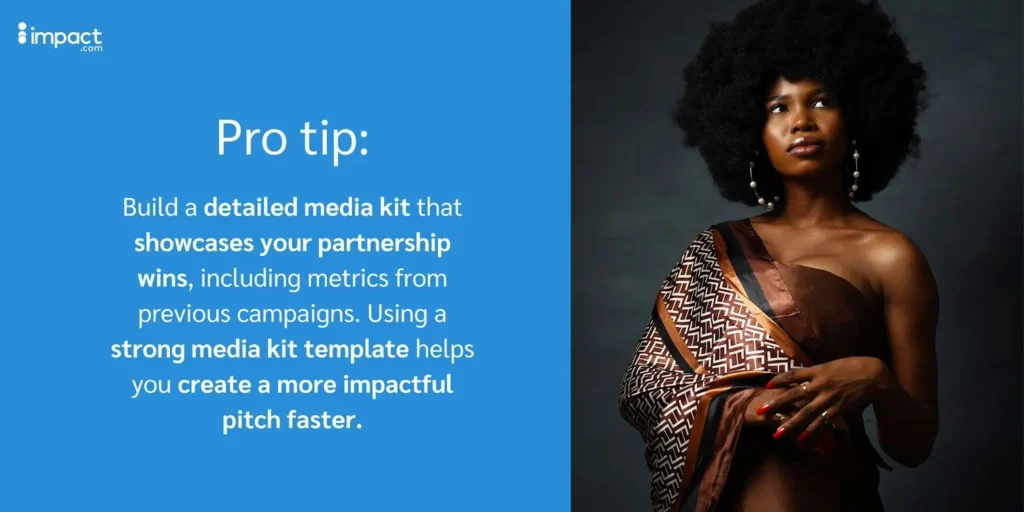
Want to craft a strong media kit but don’t know where to start? See our free media kit template.
Even if you haven’t done a brand deal yet—or don’t have the data for it—experiment with trackable links that show the impact you could generate with an affiliate deal.
On her podcast, Creator Club, YouTuber Katie Steckly explains, “It’s useful to track these things because you can start to build up a case for future brand deals to say, ‘Look, when I posted about X or Y, this is the engagement rate, this is how many clicks I got. You could expect to see similar results if you worked with me.'”
Anytime you need to add a link to a post, plug the URL into a shortener service to create a redirect link. Link shortener services like bit.ly work well for this. Then you can see how many people clicked—and for many services, location, and device data, too.
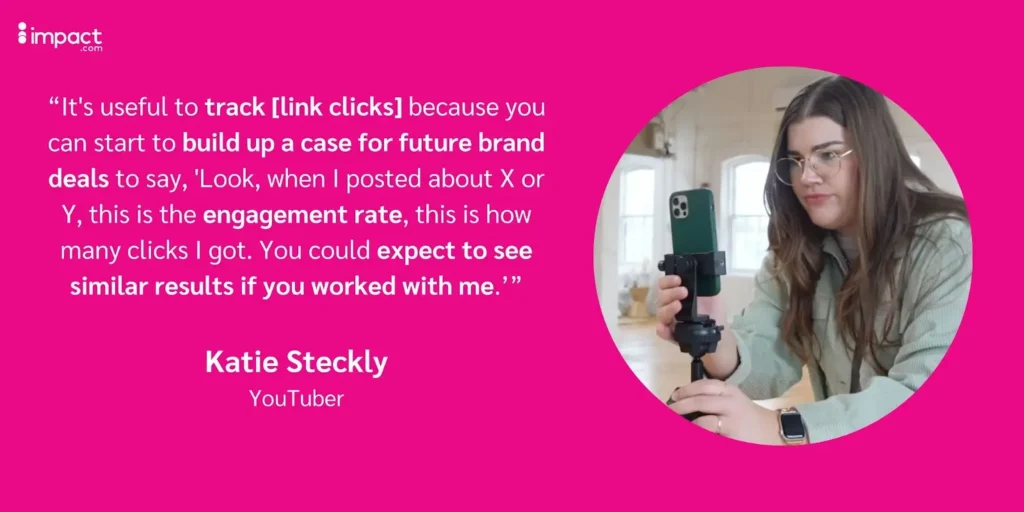
Sources: Creator Club Podcast, Become a full-time creator before the end of the year video
Justify your rates during negotiations
Include the stats you use when pitching in your rate card and have them on hand during negotiation conversations. This helps justify your rates and reminds brands about the impact they’re gaining access to by partnering with you.
At this stage, also ask the brand about their campaign goals so you can track those during the campaign implementation phase.
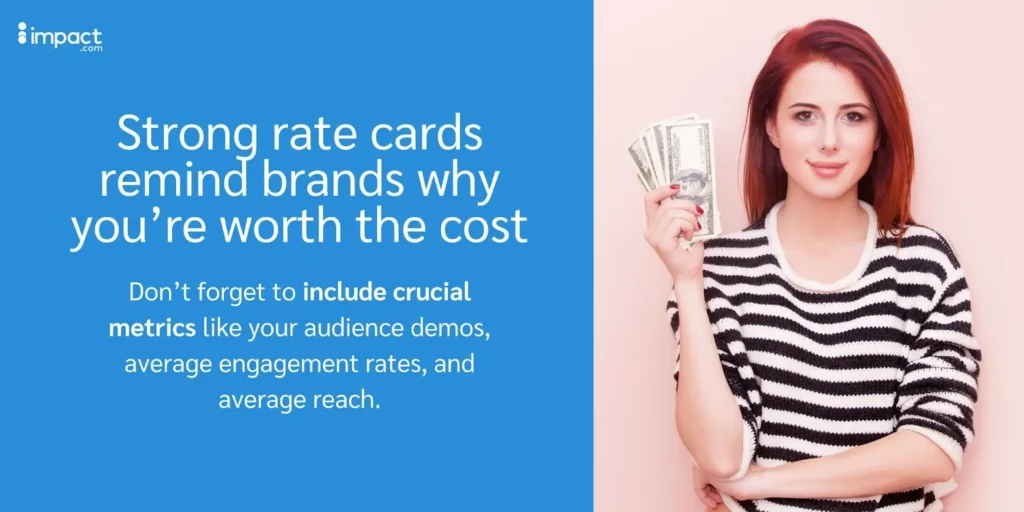
To see how you can seamlessly integrate key metrics into your rate card, check out our free rate card template.
Optimize your content for success
When creating campaign content, use your historical performance data to understand what jives with your audience.
You can also use this to negotiate the campaign brief with brands. If they want a content type you know doesn’t work for your audience, you can raise the issue with the brand and back up your claims with data. This establishes you as an expert—and they’ll appreciate your efforts to ensure a successful campaign.
Take a look at your:
- Engagement metrics: In addition to follower count, reach, and engagement rate, you’ll also want to consider link clicks, if relevant.
- Conversions (for performance-based deals): If a brand is seeking sales, tracking conversions helps you understand the kind of content that encourages your audience to buy (e.g., you might find that product tutorials or unboxing videos are the most effective).
- Audience behavioral data: Check when your audience is online to determine the best time to post and device usage to optimize for that format (e.g., if your YouTube audience is primarily on mobile, you’ll want to lean into Shorts and use an uncluttered background with lots of close-up shots).

Stay agile as you implement the campaign
If the campaign includes multiple posts, monitor your content and adjust your strategy as you go to improve performance.
Track:
- Your usual engagement metrics, including clicks
- Conversions for performance-based deals
- Any metrics important to the brand, if you have access
If you’re not doing a performance-based deal—which comes with trackable links—use Katie Steckly’s link tracking technique to measure clicks so you can understand how many people are taking action from your posts.
Remember: Meeting a brand’s KPIs will secure an ongoing relationship, so tracking these should be your primary focus. If you need access to specific metrics that are important for a campaign, ask the brand to keep you updated so you can keep improving. It will show you’re proactive and invested in the partnership’s success.
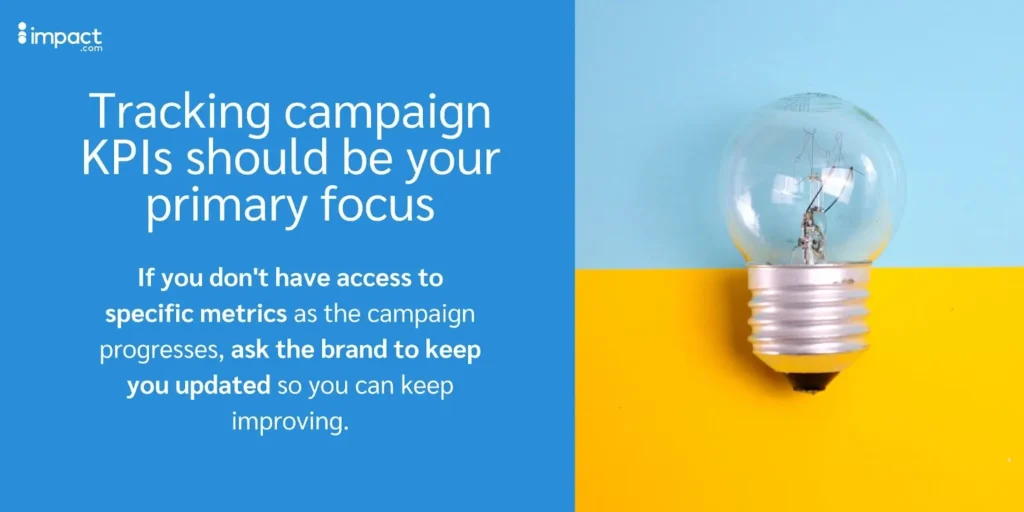
Reflect on your performance during a retrospective
Chatting through a campaign’s performance afterward is essential. But it’s a step many influencers don’t take, which is a missed opportunity. So follow up proactively after a campaign is finished.
Share the results you saw on your end, focusing on the metrics the brand said were important to them. And ask about the impact they saw on their side. That’ll show your partners you’re invested in their growth.
Other metrics are icing on the cake. For example, if the goal is conversions, you can note any impressive engagement metrics or comments that indicate positive brand sentiment.
Also, ask for feedback to show you care about improving the next campaign’s performance.
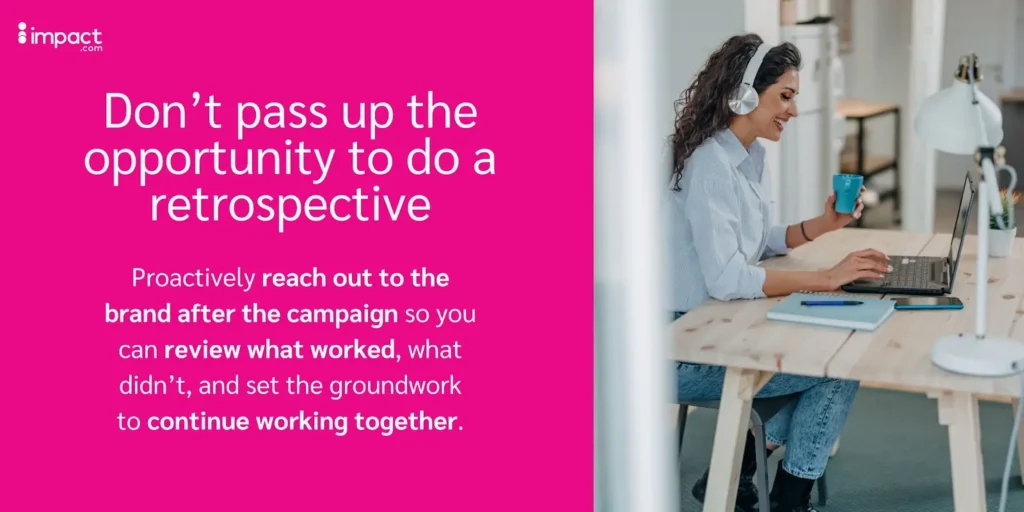
Going through a retrospective isn’t just about building brand relationships. You should also determine if the deal was worth it for you. Did your earnings match the hours you put in? If not, consider raising your rates for similar deals in the future. However, the first couple of campaigns might take longer if you’re working with a new brand or trying a new campaign style.
And for performance-based deals, did your earnings match your effort? If not, the brand or product might not resonate with your audience.
You might not hit a brand’s goals right away—and that’s okay! Your audience may need to get used to seeing this new brand on your channels, especially for lower funnel goals like conversions—or there may be a learning curve when working with this brand.
Keep watching your data and experiment to find what works to level up the next campaign’s performance.
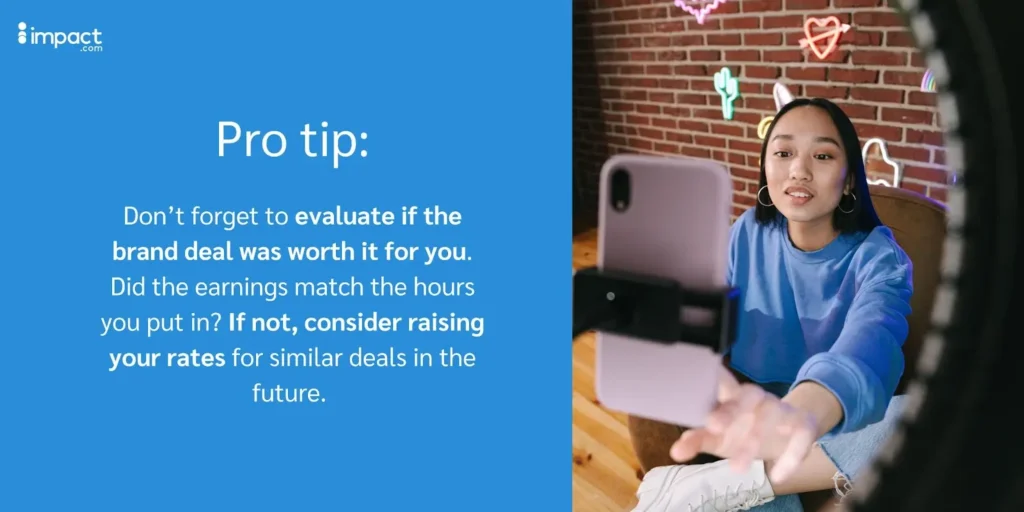
Seeding a long-term relationship in continued conversations
Lean on your data to propose the next campaign or tweak ongoing brand deals:
- Highlight your previous success together to remind brands what you bring.
- Use your link-tracking data to negotiate different deal structures—like performance-based or hybrid deals.
- Pitch new content ideas that build on the success of your first campaign or suggest a new approach to get them better results.
This makes it easier for a brand to say yes and for you to craft deals that excite you.
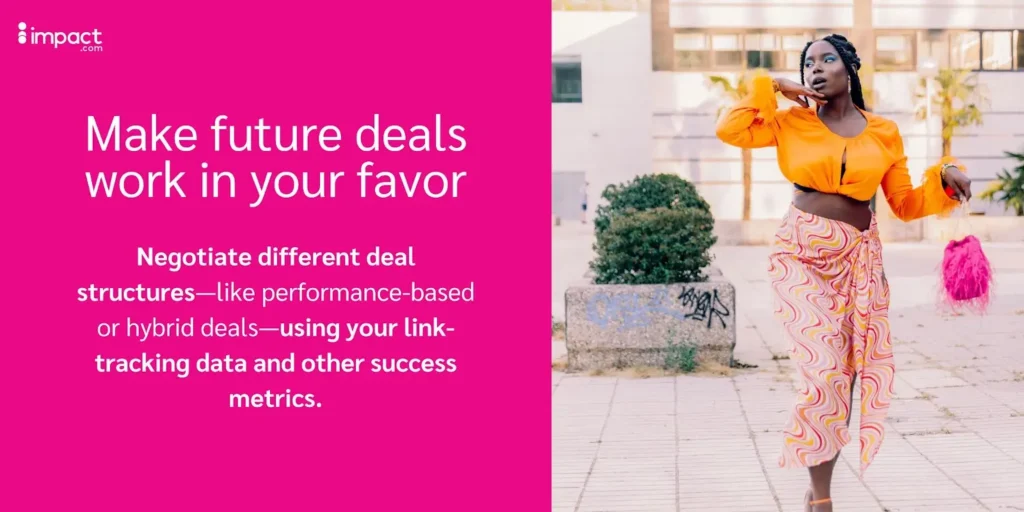
Get the analytics you need to get better collabs
Measuring campaign results on social media platforms can be challenging. Data is limited, and campaign posts may be spread across time and platforms, making it hard to understand overall campaign performance.
Using a creator partnership platform like impact.com / creator that gives you access to campaign data in one place—and with more insights. So you know what works and can easily report success to brand partners.
You can highlight the best metrics in your creator profile for impact.com’s Marketplace. There, brands can find you and determine if you’re the right match, ultimately scoring more brand deals.
Discover more tips and tricks for establishing successful partnerships:




